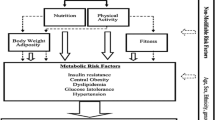Abstract
Extraction of features from healthcare devices requires the efficient deployment of high-sample rate components. A wide variety of deep learning models are proposed for this task, and each of these models showcases non-uniform performance & complexity levels when applied to real-time scenarios. To overcome such issues, this text proposes the design of a deep-learning-based bioinspired model that assists in improving the feature extraction capabilities of healthcare device sets. The model uses Elephant Herding Optimization (EHO) for real-time control of data rate & feature-extraction process. The collected samples are processed via an Augmented 1D Convolutional Neural Network (AOD CNN) model, which assists in the identification of different healthcare conditions. The accuracy of the proposed AOD CNN is optimized via the same EHO process via iterative learning operations. Due to adaptive data-rate control, the model is capable of performing temporal learning for the identification of multiple disease progressions. These progressions are also evaluated via the 1D CNN model, which can be tuned for heterogeneous disease types. Due to the integration of these methods, the proposed model is able to improve classification accuracy by 2.5%, while reducing the delay needed for data collection by 8.3%, with an improvement in temporal disease detection accuracy of 5.4% when compared with standard feature classification techniques. This assists in deploying the model for a wide variety of clinical scenarios.
Access this chapter
Tax calculation will be finalised at checkout
Purchases are for personal use only
Similar content being viewed by others
References
Bhuiyan, M.N., Rahman, M.M., Billah, M.M., Saha, D.: Internet of things (IoT): A review of its enabling technologies in healthcare applications, standards protocols, security, and market opportunities. IEEE Internet Things J. 8(13), 10474–10498 (2021)
Ray, P.P., Dash, D., Salah, K., Kumar, N.: Blockchain for IoT-based healthcare: background, consensus, platforms, and use cases. IEEE Syst. J. 15(1), 85–94 (2020)
Ren, J., Li, J., Liu, H., Qin, T.: Task offloading strategy with emergency handling and blockchain security in SDN-empowered and fog-assisted healthcare IoT. Tsinghua Sci. Technol. 27(4), 760–776 (2021)
Haghi, M., et al.: A flexible and pervasive IoT-based healthcare platform for physiological and environmental parameters monitoring. IEEE Internet Things J. 7(6), 5628–5647 (2020)
Kumar, A., Krishnamurthi, R., Nayyar, A., Sharma, K., Grover, V., Hossain, E.: A novel smart healthcare design, simulation, and implementation using healthcare 4.0 processes. IEEE Access 8, 118433–118471 (2020)
Xu, L., Zhou, X., Tao, Y., Liu, L., Yu, X., Kumar, N.: Intelligent security performance prediction for IoT-enabled healthcare networks using an improved CNN. IEEE Trans. Industr. Inf. 18(3), 2063–2074 (2021)
Pathak, N., Deb, P.K., Mukherjee, A., Misra, S.: IoT-to-the-rescue: a survey of IoT solutions for COVID-19-like pandemics. IEEE Internet Things J. 8(17), 13145–13164 (2021)
Vedaei, S.S., et al.: COVID-SAFE: An IoT-based system for automated health monitoring and surveillance in post-pandemic life. IEEE Access 8, 188538–188551 (2020)
Ahmed, I., Jeon, G., Chehri, A.: An IoT-enabled smart health care system for screening of COVID-19 with multi layers features fusion and selection. Computing, 1–18 (2022)
Pal, M., et al.: Symptom-based COVID-19 prognosis through AI-based IoT: a bioinformatics approach. BioMed Res. Int. (2022)
Yang, Z., Liang, B., Ji, W.: An intelligent end–edge–cloud architecture for visual IoT-assisted healthcare systems. IEEE Internet Things J. 8(23), 16779–16786 (2021)
Saha, R., Kumar, G., Rai, M.K., Thomas, R., Lim, S.J.: Privacy Ensured ${e} $-healthcare for fog-enhanced IoT based applications. IEEE Access 7, 44536–44543 (2019)
Bao, Y., Qiu, W., Cheng, X.: Secure and lightweight fine-grained searchable data sharing for IoT-oriented and cloud-assisted smart healthcare system. IEEE Internet Things J. 9(4), 2513–2526 (2021)
Zhang, Y., Sun, Y., Jin, R., Lin, K., Liu, W.: High-performance isolation computing technology for smart IoT healthcare in cloud environments. IEEE Internet Things J. 8(23), 16872–16879 (2021)
Chanak, P., Banerjee, I.: Congestion free routing mechanism for IoT-enabled wireless sensor networks for smart healthcare applications. IEEE Trans. Consum. Electron. 66(3), 223–232 (2020)
Author information
Authors and Affiliations
Corresponding author
Editor information
Editors and Affiliations
Rights and permissions
Copyright information
© 2023 The Author(s), under exclusive license to Springer Nature Switzerland AG
About this paper
Cite this paper
Reddy, V.S., Debasis, K. (2023). DBFEH: Design of a Deep-Learning-Based Bioinspired Model to Improve Feature Extraction Capabilities of Healthcare Device Sets. In: Chaubey, N., Thampi, S.M., Jhanjhi, N.Z., Parikh, S., Amin, K. (eds) Computing Science, Communication and Security. COMS2 2023. Communications in Computer and Information Science, vol 1861. Springer, Cham. https://doi.org/10.1007/978-3-031-40564-8_11
Download citation
DOI: https://doi.org/10.1007/978-3-031-40564-8_11
Published:
Publisher Name: Springer, Cham
Print ISBN: 978-3-031-40563-1
Online ISBN: 978-3-031-40564-8
eBook Packages: Computer ScienceComputer Science (R0)





